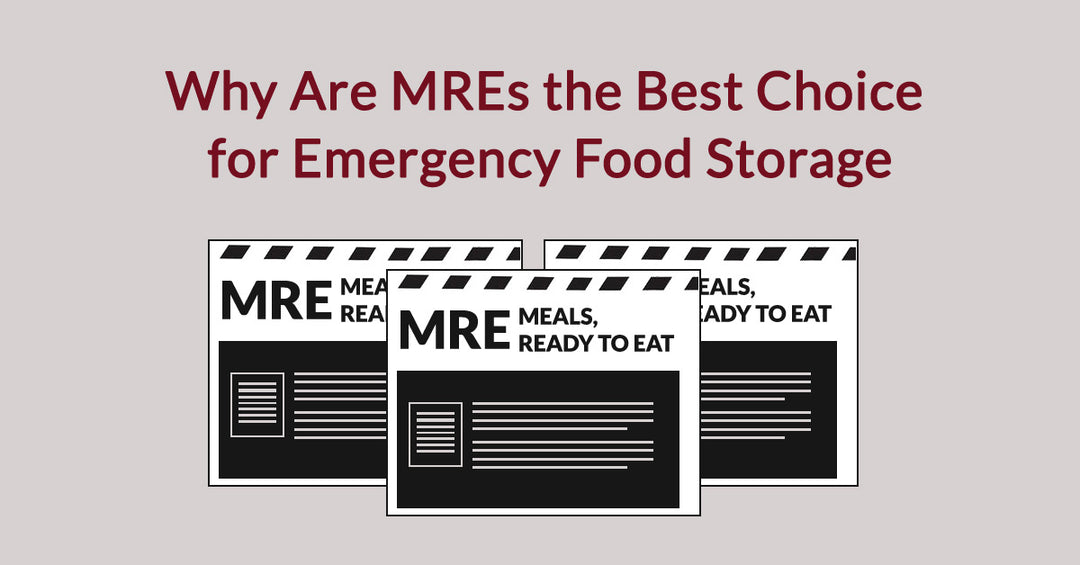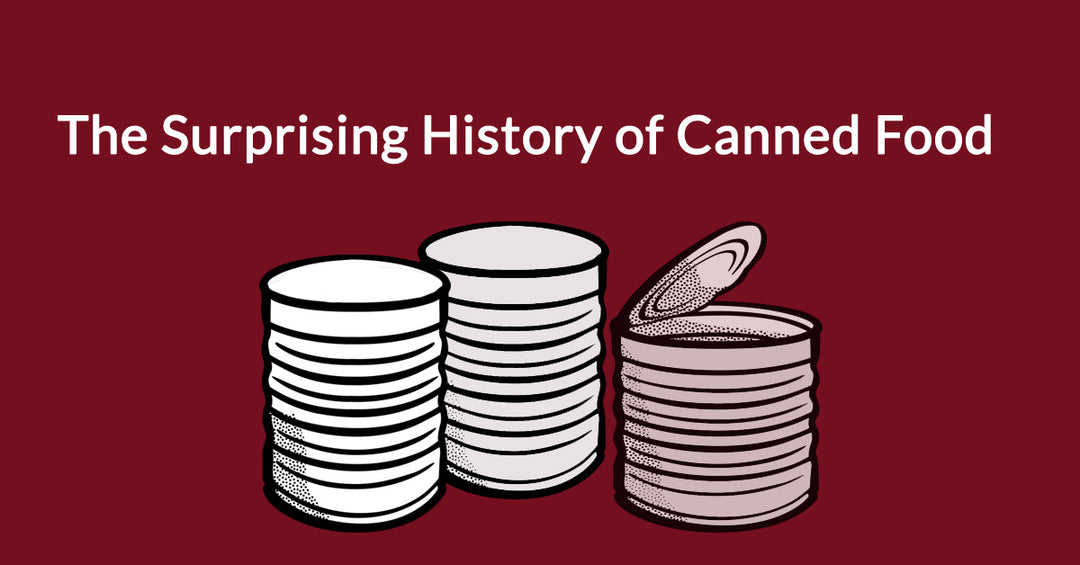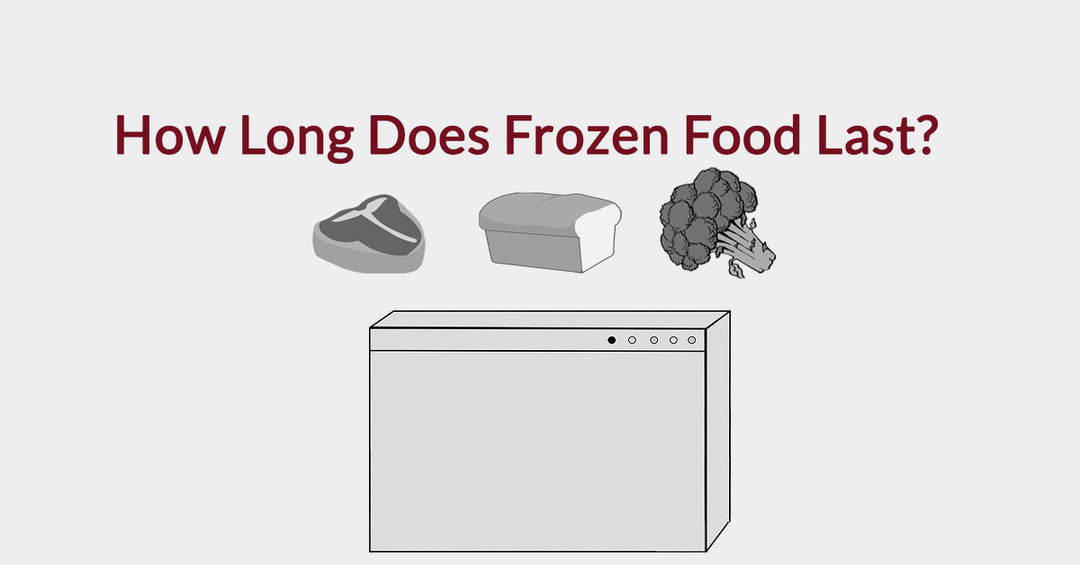The History of Modern MREs

Any person who has ever taken part in a long hike understands the need to ensure they have packed the right food type. You need access to survival food that is not only sufficient to last the duration of your trip but which is also lightweight and nutritious. The food should also not taste like cardboard!
For individuals serving in the Armed Forces, making certain this culinary criterion is met is of crucial importance, more so when talking about emergency food rations. In a bid to ensure that the food needs of the troops are met, the U.S Department of Defense regularly works hand in hand with people in academia and the food industry.
This has assisted in narrowing down the process to an exact science. Over time, MREs have undergone a lot of changes that have helped make them what they are today. Survival food today comprises of a 1,100-1,200 calorie three-course meal that has an entrée, a side dish, a piece of bread or cracker with spread (peanut butter or jelly), a dessert, and numerous beverage blends (together with an electrolyte beverage).
Additionally, each Meal Ready to Eat contains condiments, a napkin, a spoon, and a flameless ration heater (FRH).

MRE — The Beginning
Before there was the Meal Ready to Eat, there were a variety of rations used to feed soldiers. These were known as K Rations or C Rations. The "Reserve Ration" from the early 1900s included a pound of dehydrated meat (i.e. jerky) and hard tack biscuits. The lack of nutrition caused the rations to be replaced with the "C Ration" in 1938. These rations contained pre-cooked prepared food. These rations were later replaced with the Meal, Combat, Individual (MCI) Ration. The MCI was not much on an improvement and was still not popular with soldiers.
Later, soldiers around the world were fed using the LRP. At this time, the primary form of military cooking outside the official mess halls was the Food Packet, Long Range Patrol (LRP). The development of this emergency food rations was left to the cooks and the Armed Forces scientists.
Some consider the LRP the first real effort made by United States scientists. to come up with a nutritionally balanced food ration for the servicemen and women. These rations had enough calories to keep the soldiers in combat well fed. The LRP food rations were used in the period between 1958 to 1980.
This period is referred to as the period between the end of the Korean War as well as that of the Vietnam War. United States soldiers stationed in Vietnam relied on it as their main meal.
The Department of Defense in 1963 commissioned a large group of military cooks and scientists to come up with a meal that was palatable to the soldiers. As an emergency food, it also needed to be lightweight and capable of lasting for more than a few weeks. It was meant to ensure the soldiers got to eat a whole ration.
Even though it had proved effective in feeding the hungry soldiers, it was deemed to be too expensive. In 1975, The United States Armed Forces’ Quartermaster Command office began the process of coming up with a better version of the LRP.
The LRP Replacement
Doctor Abdul Rahman, a civilian scientist, was contracted by the military in 1975 to start the process of creating a better version of the LRP. In the course of his research, he managed to create a whole meal made up of dehydrated food. This food was held in a lightweight and highly portable pouch.
His efforts led to him being awarded the Meritorious Civilian Service Award by the military. The work he performed for the military served as the foundation for which the Meal Ready to Eat was created. Despite being effective, these meals still had some issues as they weren’t always palatable.
Additionally, the menu only provided a total of 12 options. The military in 1981 used the meals as special issue rations but only made them a standard-issue 5 years later. While they only became standard issue in 1986, the Meal Ready to Eat has been undergoing continuous development since 1981.
Since then, the meals have undergone significant changes much to the delight of the servicemen who have no option but to eat them when under deployment.
Developments in Meal Ready to Eat Technology
The FRH (Flameless Ration Heater) was developed 9 years after the Meal Ready to Eat was first issued. Initially, the FRH was made up of a series of chemical reactions, more so an exothermic reaction that didn’t have any flame. The reaction was normally triggered through the inclusion of water.
Military scientists are continuously working on coming up with newer and more palatable meals for servicemen and women. While those in the field believe that there’s still a long way to go, new entrée options have emerged over the years. They are options meant to meet the needs of certain types of soldiers.
Kosher meals and halal meals are today available for Jewish and Muslim soldiers alike. Soldiers who aren’t in a position to consume meat for one reason or the other can always opt for vegetarian meals.
Having said all this, the military MREs aren’t as pleasant as this article may have made them sound. While the options available continue to increase, it takes months, and sometimes years for a new item to get added to the menu. And even as new options continue to emerge, many still find the military-grade Meal Ready to Eat rations hard to eat and unpalatable.
Modern Meal Ready to Eat for Civilian Use
Meals Ready to Eat intended for civilian use happens to be more luxurious compared to their military versions. Even though the Department of Defense would be more than happy to supply its troops with more delicious options, the primary concern with the food rations lies in their capacity to resist spoiling and in their portability.
Unlike military cooks, civilian cooks don’t have to worry about laboring under severe restrictions. The ability to combine modern technology with the skills offered by a well-trained chef has enabled us to come up with a broader choice of meals. Our meals are intended for easy carrying and preparation.
This is in addition to being able to go for a longer duration without ever going bad, or losing their taste.
Civilian Meal Ready to Eat — Its History
Before 2000, not many companies had received authorization to start producing this type of meal rations intended for civilian use. While the demand for this type of product was already present, the reality is that there wasn’t much information regarding their existence. By this time, the standard rations had only been in existence for 14 years. This meant that they hadn’t been well spread in the public domain.
Another issue hampering their production was the fact that civilian technology was still in its infancy stages. Therefore, while it was still possible to get these meals from designated retailers, not many were impressed by their weight and taste.
The rush officially began in the year 2000 after the Y2K hit the country. Many civilians were frantic to start stocking up on survival essentials, e.g., food and other important supplies even as they continued to wait for the world to end. While many civilians came to know about the meal rations during this time, the demand didn’t last for long as many manufacturers began to drop out of the market.
A resurgence would later occur in the year 2005 after Hurricane Katrina hit up the shores of the United States. The hurricane which left behind unimaginable devastation in its wake led to renewed demand for civilian Meals Ready to Eat. This new demand helped some past manufacturers to find their way back into the market, while also creating a new opportunity for other interested players.
Conclusion
While civilian Meals Ready to Eat may not have been in the market for long, many prefer it to the military option. Both civilian and military scientists are continuously working around the clock to try to make the food last longer. This includes coming up with new menu options and improving its taste as well.






